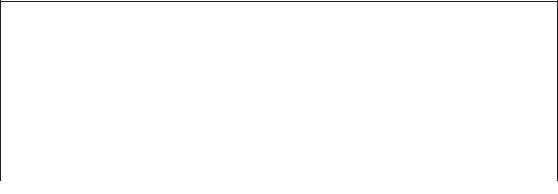
Cleaver Economics The Basics (Routledge, 2004)
.pdfAnother yardstick would be to compare the consumption of primary energy sources of the average person in each country – since this is a direct measure of how much of a basic and essential resource (such as oil) is being used up by differing peoples.
These are crude measures. Many more sophisticated and more accurate surveys can be quoted but the basic point is made: there exist great extremes of wealth and poverty amongst the peoples of the planet.
How such an unequal distribution has come about is a much more difficult question of positive economics. It is, in fact, an inquiry that will run all through this book as an undercurrent that flows behind the various theories and analyses which form the backbone of this subject.
What, if anything, should be done about global inequality is, of course, not a question of positive economics at all. Like a scientist studying the workings of the solar system, or the internal organs of some animal, the economist is responsible for publishing the evidence and identifying what might happen if you make this change or that to economic systems but he/she has no more right than anyone else to say what ought to happen in this world.
It is always easy to ask important questions in economics. It is easy also to make colourful and outrageous claims about the nature and conduct of economic affairs. (Have certain people really squandered the riches of Earth?) It is not always easy, however, to give balanced, objective and accurate responses to such questions and assertions. That is nonetheless the challenge of positive economics.
T H R E E D E C I S I O N - M A K I N G S Y S T E M S
Let us return now to the study of decision-making systems that communities may adopt to organise their economic affairs. There are three examples.
First, consider the economic activity within a small, student-run community – such as in a university college or hall of residence. In this example, we can imagine a fairly active social life exists, perhaps led and organised by a student committee: putting on discos, arranging a regular supply of drinks and snacks, maybe on occasions inviting outside agents and artistes to come and entertain the residents.
© 2004 Tony Cleaver
Now contrast this with the economic life of a large town or city: an enormous range of industrial, commercial and personal services are provided – too many to briefly enumerate.
Third, at the opposite extreme, we can consider the economic organisation of a small family home where housekeeping, maintenance and family care takes place.
How is it decided in each of these communities what goods and services should be provided; how (where, when and by whom) these commodities should be produced and who should enjoy the benefits of their consumption? Decisions as to what is produced, and how and for whom, may be taken in very different ways in these three examples.
Small college communities where everyone knows one another can often be run very democratically – people being elected for office and then asking around what goods should be ordered, what sorts of things people want to get done, etc. An efficient CENTRAL PLANNING mechanism may evolve – the community’s wants are surveyed, passed up to the decision-making committee who then issue orders to outside suppliers or delegate production to internal groups (the bar committee, the dance organisers, etc).
In a family home, there is unlikely to be any formal election of senior officers. Most economic decisions are taken by parents and family elders and roles within the family evolve slowly according to TRADITION and the circumstances of individuals.
Most of the economic activity in a large city, however, is determined not by planning, nor by social custom but by the dictates of a free MARKET. If there is sufficient demand for a product or service then, subject to its lawful production, it will be provided. (Governments can outlaw certain trades such that supplies are severely cut back – but so long as people are willing to pay high, BLACK MARKET prices production will take place anyway. The free market can subvert government.)
These three decision-making systems introduced here can be found in operation all over the world. Their precise application in any one theatre of human activity will depend on the institutions and practices of the country concerned – some industries and some countries may demonstrate a distinct preference for one system above the rest; another economic organisation may rely on a combination of all three. Industry in almost any country will demonstrate
© 2004 Tony Cleaver
some element of all three decision-making systems acting together but let us look for examples where each regime can be studied more or less on its own.
T R A D I T I O N A L A G R I C U LT U R E
As an example of traditional practice, there is no better showcase to be found than to observe the work of the millions of people around the world tied to subsistence agriculture. They are bound to a system that – relative to other societies – has seen little change over centuries.
Evidence suggests that farm workers in poor countries are not themselves resistant to change – indeed they may respond rapidly to genuine opportunities to improve their welfare – but that given the circumstances in which they find themselves, their traditional agricultural practices are in fact rational and efficient outcomes that have evolved over generations of trial and error.
What goods does such a society choose to produce? Those that experience shows to be the most reliable.
In farming some of the poorer lands on the planet, where climatic conditions may vary, where ownership of land and one’s place in society is traditionally determined and where government is remote and as reliable as the wind, those who work the land tend not to take undue risks. They produce therefore what they know they can count on, using traditional technology that is home-grown and suited to the terrain.
Traditional agriculture tends to be self-sufficient because it has to be. To become dependent on a number of external suppliers in poor countries is to risk losses when they fail you. And losses in this context means not only losing crops or livestock but losing your life as well.
Social custom therefore determines much of the economic organisation that takes place in poor rural communities. What, how and for whom production takes place is decided by traditional practices that have evolved according to the particular institutions of the society in question. Within these given parameters, such economic organisation can often be highly efficient – much to the surprise of outsiders who expect to find backward or irrational production techniques.
© 2004 Tony Cleaver

The disadvantage of tradition, of course, is that no matter how appropriate established procedures are in their specific context, customary ways of life rarely prepare their followers to cope well with unprecedented changes (see Box 1.1).
Box 1.1 El Salvador: a case study in the vulnerability of traditional economic practice
El Salvador became independent from Spain in 1839 and for some years thereafter the country remained traditionally agricultural, with high birth and death rates, a small and stable population yet with sufficient fertile land to provide for all with no great extremes of poverty or wealth.
Standards of health and education were low in the mid nineteenth century but a British diplomat’s wife commented that, in contrast with the major cities of England at that time, there was nonetheless a striking lack of poverty in this Central American republic. Land holdings were dispersed amongst the population with all families having access to their own property or to communal land, and a diverse range of agricultural goods was produced to support domestic consumption. The economy was basically one of self-sufficiency but with limited trade and economic growth.
The latter half of the nineteenth century, however, brought accelerating change. In a time of increasing world communications and trade, a growing El Salvador elite found in common with others around the globe that there was profit to be made in promoting exports. Most importantly, they found coffee. Suddenly, the ownership of coffee plantations became the key to wealth.
Families that started plantations found ways to increase the areas under cultivation. Indian village lands, worked communally for centuries, were said to be preserving a ‘backward’ culture and came under threat. With no property rights recognised in law, coffee planters bought them up, displaced the inhabitants but offered only limited plantation work at pitifully low wages.
© 2004 Tony Cleaver

El Salvador was eventually transformed – economically, politically and socially. Coffee dominated the economy and those who did not have coffee had little else. Land owning structures, land use patterns, labour relations and the distribution of economic and political power all changed. El Salvador is now a country where economic growth has occurred – though its benefits have been unequally distributed. Landless rural peoples have little control over their destinies and so the only remaining ‘tradition’ which dictates what occupations poor people follow, what goods they produce and how they produce them is the continuing tradition of economic powerlessness. Their choices today are in fact more limited than in the past, thanks to the institutions that have overturned earlier social custom and have re-shaped their society.
Source: Burns, Bradford ‘The Modernization of Underdevelopment: El Salvador 1858–1931’ reprinted as chapter 10 in Wilbur C. K. and Jameson K. P., The Political Economy of Development and Underdevelopment McGraw-Hill 1996.
M A R K E T A G R I C U LT U R E
Contrast all of the above to agricultural organisation in modern market societies. Here, farms are typically located within a complex network of supporting suppliers and outlets in time and space, from which a wide range of inputs are purchased and to which outputs are sold. Crop farmers use formulaic combinations of fertilisers, pesticides and irrigation, employ agricultural machinery that is regularly serviced and use skilled, hired labour. In animal husbandry, there is similar dependence on bought-in feedstock and veterinary and transport services. Such farming practices are embedded in a modern, interdependent market society and they could not survive without it.
What goods modern farmers produce depend on what prices and profits they can gain from the market. Whether it be organic foodstuffs or genetically modified crops, the market-driven producer will farm that which brings in the best returns.
© 2004 Tony Cleaver
The production methods employed are similarly dependent on market signals – where technical progress has brought down the price of machinery, seed varieties and/or breeding stock, the farm will be highly CAPITAL INTENSIVE. Alternatively, if the price of farm labour is cheaper, farming practices may be less capital intensive and more ‘hands on’.
Finally, the rewards to farming will be divided between landowners, creditors, labourers and management according to the rates of RENT on land, INTEREST on capital, WAGES or PROFITS that rule in the market place. Certainly, if resources are not guaranteed the going market rate – whether it be a worker’s wages or interest on a loan – then the resource involved, labour or capital, will seek better employment elsewhere.
Freedom to move is an essential pre-condition of any functioning market and it is a key feature of this economic system that distinguishes it from traditional and planned systems. Consumers must be free to change their purchases, and resources their employment, if the market system is to work efficiently.
MOBILITY can only be meaningful, however, if people have effective choices. If there are no alternatives then there is little freedom. Very poor people, in particular, may be unable to afford the glamorous variety of expensive products that are displayed on advertising hoardings and similarly unable to afford the upgrading of skills that might allow them to seek more rewarding employment.
For such reasons, certain governments in the past have attempted to introduce planned systems that guarantee all peoples in society access to basic essentials such as food, shelter, education and health.
P L A N N E D A G R I C U LT U R E
A system of planning in agriculture was famously practised in Soviet collective farms and Chinese communes in the latter half of the twentieth century. Huge areas of land and millions of labourers were employed to produce targeted amounts of foods to be distributed to the nation’s people at low, ADMINISTERED PRICES. Products that arrived on the shelves in the cities were those that the planners (not customers) ordered. Similarly, the type and quantity of resources employed on the farms were those that planners dictated.
© 2004 Tony Cleaver

Private ownership of land, profit-maximising behaviour and the ability of entrepreneurs to employ labour and determine the working lives of others was prohibited. The state directed the objectives of the collective farms/communes, gave the orders as to who was working where and with whom and restricted the freedom of individuals to do otherwise. While this may seem completely alien to those raised in a world of democratic choice and economic plenty, a system which guaranteed food supplies and certain employment was extremely welcome to those who had suffered their absence.
What, how and for whom production takes place in planned systems is decided by a hierarchical organisation where last year’s achievements are reviewed, tomorrow’s requirements are identified and orders are given to all levels throughout the economy to coordinate production to meet the announced targets. Individual choice thus becomes subservient to the needs of the society as a whole.
The paradox, of course, is that society is made up of individuals. Thus a key disadvantage with centrally planned systems is that beyond basic needs how can senior administrators know and make provision for what every individual wants? The Soviet and Chinese COMMAND ECONOMIES additionally suffered from politically determined payment systems that destroyed incentives and ultimately entailed that national outputs and incomes could not keep up with Western standards. No nation-wide examples of centrally planned systems thus survive today, although within market economies some important and fascinating case studies are still to be found (see Box 1.2).
Box 1.2 Britain’s National Health Service: planning in medical services
The largest employer in Western Europe is the UK’s National Health Service (NHS). It is a planned system of health provision that aims to provide free access to medical services to all Britons that require it. Set up originally in 1947, it is a huge organisation that provides nationwide coverage with relatively little competition from the private sector. The proportion of UK
© 2004 Tony Cleaver

national income spent on the NHS is much lower than that spent on health by other developed countries and it is thus a relatively efficient provider. There are a number of good reasons for this: first, it is a state MONOPSONY: that is, an immense, and only, purchaser of very large quantities of medical equipment, drugs, doctors and nurses and so it can thus drive prices (its costs) down. Second, it is a state MONOPOLY: a single, nationwide producer which is able to plan a network of hospitals and health care services that can avoid wasteful duplication and underemployment of resources. (Note finally, because it is a public monopoly and not a private one, the prices it charges are the very lowest it can get away with – not the very highest.)
In any planned system where consumers have little choice, there can be problems of indifferent service on the part of the providers. Insisting on professional standards and measuring performance can go some way to alleviating this inherent disadvantage (applicable to state schools as well as hospitals) but there is increasing insistence on making hospitals compete and instituting patient choice in an attempt to improve efficiency and simulate a QUASI MARKET in UK health care.
Another problem when you have a valuable service made available to the public at next to zero price is excess demand. Any one with any complaint goes to see the doctor. Since price cannot be used to ration out the scarce supplies, distribution is effected by executive decision. That is, some doctor, nurse or hospital administrator must decide who gets served when. For non-urgent medical treatment that tends to mean a long wait.
One other ongoing problem of the NHS is that it is dependent on state funding (i.e. government taxation) and raises relatively little revenue of its own. It is not free to sell its services at a profit, nor can it divert resources to invest in those medical technologies which can guarantee the biggest financial returns. Some may well argue that this is just as well – wealthy millionaires who want cosmetic surgery cannot buy hospital time and resources that could otherwise be used to treat penniless carcrash victims. It does mean, however, that getting the money to pay for the latest in high tech medical research means continually bargaining for government handouts.
© 2004 Tony Cleaver

Whatever the criticisms about the monolithic nature of the state-run NHS, however, the over-riding objective of this planned system has never been questioned – to provide an equitable health service for all at no up-front price to the patient. What, how and for whom medical services are provided is determined by medical administrators, not by the purchasing power of consumers.
E F F I C I E N C Y A N D E Q U I T Y
In any context, whether it be how a whole economy functions, a particular industry or just the operations of an isolated farming community, judging the effectiveness of different systems of economic organisation means considering issues of EFFICIENCY and
EQUITY.
Just how efficient is the organisation in generating outputs, creating wealth and improving welfare? And does its economic activity result in a social order and distribution of benefits that we can approve of and can defend on grounds of social justice/equity?
A beautiful and harmonious society may be perfectly equitable but extremely wasteful and hopelessly inefficient in providing for its needs – a community in peace but unable to fully feed its populace and lacking the means to defend itself against the ravages of disease or foreign invaders.
Alternatively, the society may be a ruthlessly efficient productive machine, its shops full of a wide range of foods and technologically advanced, sophisticated gadgetry – but based on exploitation of the powerless and blighted by sections of the public who are homeless, starving and capable only of thieving rather than productive employment.
Clearly neither extreme is attractive. What is ideal is an economy that combines both productive efficiency and social equity.
The history of humankind is illustrated by the dramatic rise and fall of empires and civilisations and the success or otherwise of various experiments in social organisation – none more dramatic
© 2004 Tony Cleaver
than the immense changes witnessed in the twentieth century. The last hundred years have seen wars, revolutions, economic depression, the division of the world into opposing camps of capitalism and communism, increasing wealth of a capitalist minority and finally the eventual collapse of the centrally planned, command economies behind the ‘iron curtain’.
The process of evolution in the decision-making systems that society has invented must inevitably continue. And as some systems become extinct so others replace them. In the new millennium, what has evolved as the most powerfully productive economic engine is a predominantly market-based dynamo capable of astonishing accomplishments but whose worse excesses – most would agree – have to be kept in check by the moderating influence of public authority.
The market model’s efficiency relative to other forms of economic organisation has passed the ultimate test of outperforming all alternatives. It is on grounds of equity, however, that its success can be questioned.
This chapter has already illustrated the great extremes of wealth and poverty that exist amongst the peoples of the world. Over the last century or so, these extremes have in fact widened at an increasing rate as those communities which have found the formula for increased economic growth have left behind those unable to apply the same recipe for success.
But the inequities go further than this. Exponential growth in economic activity has visited increasing damage on the natural environment. Market systems that treat certain resources of the Earth as FREE GOODS (such as the oceans and atmosphere) have no incentive to conserve them. The monumentally productive market engine uses and abuses such free goods at will, dumps its waste products into the skies and seas and it is only relatively recently in our history that we have begun to understand the harm we have been doing to the biosphere. Priceless (literally) flora and fauna are rapidly diminishing in number and we are thus reducing the planet’s heritage that will eventually be passed on to our children.
If today’s standard of living is only supportable by depleting the resources that are available for the future then INTERGENERATIONAL EQUITY is being sacrificed.
Economist Kenneth Boulding characterised humankind’s industrial activity as if it were operating within limitless frontiers – a ‘cowboy
© 2004 Tony Cleaver
